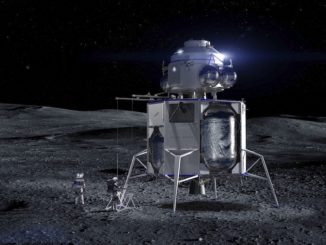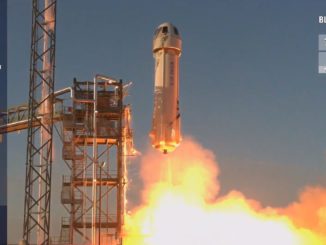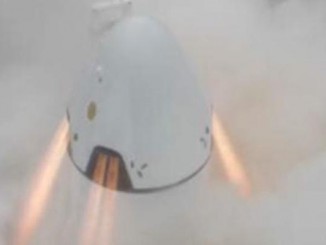STORY WRITTEN FOR CBS NEWS & USED WITH PERMISSION

Two astronauts floated outside the International Space Station early Friday for the first of four planned spacewalks to wrap up a complex multi-year job to replace 48 aging batteries in the lab’s solar power system with 24 more powerful lithium-ion units.
Getting off to a fast start, Chris Cassidy and Robert Behnken ran well ahead of schedule throughout the day, completing all of their planned tasks and starting work originally planned for the next spacewalk in the series next Wednesday.
“I think we’ve done enough for one day,” one of the spacewalkers quipped before heading back to the airlock to wrap up a six-hour seven-minute excursion.
The battery replacement work began in January 2017 and based on Friday’s results, the astronauts should be able to complete the work next month, ensuring smooth, reliable power distribution through the rest of the decade if not beyond.
“I think it’s safe to say, barring any unforeseen type of failures, we’ll be good on batteries for a number of years to come,” said Kenny Todd, deputy space station program manager at the Johnson Space Center in Houston. “The longevity of the new technology batteries gets us well out through what will most likely be the end of the program.”
Floating in the Quest airlock module, Cassidy and Behnken switched their spacesuits to battery power at 7:32 a.m. EDT to officially kick off the 228th EVA in station history, the fourth so far this year and the seventh for both astronauts.
Assisting with the lab’s robot arm from inside the station were Douglas Hurley, Behnken’s crewmate aboard the SpaceX Crew Dragon ferry ship that carried them to orbit last month, and cosmonaut Ivan Vagner, who launched aboard a Soyuz on April 9 with Cassidy and cosmonaut Anatoly Ivanishin.
Floating out of the airlock, Cassidy reported that a small wrist mirror, used to help him read spacesuit displays that cannot be seen directly, had somehow worked loose and drifted away at about a half a mile per hour. Tipping the scales at just a tenth of a pound, the lost mirror posed no threat to the station or the crew, and in any case Cassidy had a spare.
NASA is wrapping up the replacement of all 48 of the space station’s older-generation nickel-hydrogen batteries with 24 smaller-yet-more-powerful lithium-ion units, along with circuit-completing “adapter plates” to fill in for batteries that were removed but not replaced. The adapter plates also provide long-term storage locations for several of the old batteries.
The new batteries are arranged in sets of six in integrated electronics assemblies, or IEAs, at the bases of the station’s four main solar array wings. Each wing is made up of two extendable blankets of solar cells and the electricity they generate is delivered throughout the station using eight electrical buses, or channels, two per IEA.
Batteries in each IEA store power generated when the arrays are exposed to sunlight and then provide the electricity needed to keep the station operating during the lab’s passes through Earth’s shadow.
The inboard right-side arrays are part of the starboard 4, or S4, truss segment, providing power to channels 1A and 3A. The inboard left-side arrays are part of the port 4, or P4, truss segment supplying power to channels 2A and 4A.
In 2017, spacewalkers replaced the 12 inboard S4 solar array batteries with six lithium-ion units and in March 2019, the 12 inboard P4 batteries were replaced by another six LiOH batteries.
For all of those replacements, the station’s robot arm had the reach necessary to assist the astronauts with battery relocations and unbolting and only four spacewalks were required. The outboard arrays and batteries pose a more difficult challenge.
During two spacewalks last October and another two more this past January, spacewalkers replaced the batteries at the far left end of the station’s truss — P6 — for power channels 2B and 4B. The batteries in channel 4B were installed during NASA’s second and third all-female spacewalks.
Because the outboard work site is so far from the robot arm’s outermost anchor point, four spacewalks were required because the astronauts had to manually move batteries back and forth between a storage pallet and the integrated electronics assembly where they were installed.
Cassidy and Behnken plan to carry out four essentially identical spacewalks to replace the 12 nickel-hydrogen batteries in the outboard right-side set of arrays with six lithium-ion units, three powering channel 1B and three used by channel 3B.
During Friday’s excursion, the astronauts removed five of the six older-generation batteries in the 1B circuit, installed two new batteries and two adapter plates. During next week’s spacewalk, the final nickel-hydrogen battery in the 1B circuit will be removed and a third lithium-ion unit will be installed along with one more adapter plate.
During two spacewalks next month, Cassidy and Behnken plan to replace the batteries in power channel 3B.
But those spacewalks will depend in part on how the first two go and the status of plans to bring Behnken and Hurley back to Earth in the Crew Dragon ferry ship around Aug. 2. If problems crop up, the final two spacewalks could be deferred and carried out by a future station crew.



